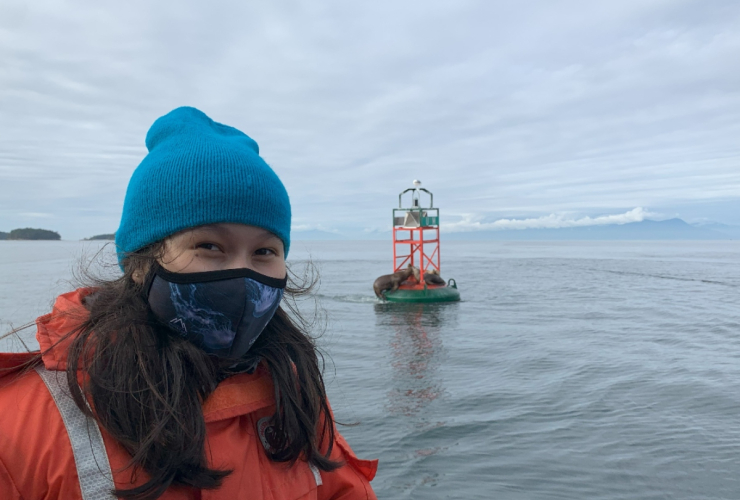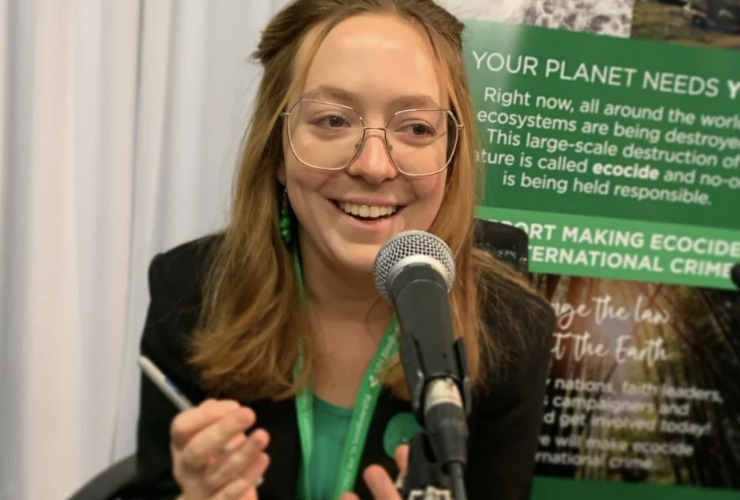These in-their-own-words pieces are told to Patricia Lane and co-edited with input from the interviewee for the purpose of brevity.
Zamani Ra, founder and CEO of CEED Canada, helps low-income newcomer communities make a difference and build community by showing them climate action can be simple, convenient and culturally relevant.
Tell us about your work.
We start by exploring how participants are experiencing the climate crisis. Perhaps their building is flooding often or their kids have to stay inside when it is too hot. Perhaps their home country’s beaches are disappearing or family members in another country struggle with drought.
We introduce basic science, like how burning carbon dioxide and methane from the stuff we throw away ends up in landfills and causes the impacts they identify as important.
Through fun activities, we show how recycling decreases their contribution to the landfill. We explore the ways their parents or grandparents managed waste in their home country. Then they can connect the wisdom of their own experience and the language and customs of climate action used here. For example, my own Jamaican family used the word “mulching” instead of “composting.”
Sorting has to be made easy. One of the main barriers is limited access to the resources needed to participate. Sometimes the compost buckets will be stored in the building manager’s office. Sometimes we have to push and persuade building management to get specific items.
In a recent session, 13 families from a housing community in Etobicoke calculated that over a four-week period, they diverted 1,200 pounds of food waste and recycled enough material to fill a container the size of an extra-large-sized SUV. Collective impact can be very persuasive.
The impact on young people is immeasurable. They will grow with a sense of both individual responsibility and the joy to be had in community-building while making a difference together. Those are powerful lessons.

How did you get involved?
A young resident fell down the escarpment behind my building after soil erosion was caused by heavy rainfall followed by dry, hot weather. The Toronto Conservation Authority wanted to address the incident with a hearing held far outside the community. I insisted the inquiry be held in our community meeting space. Forty people showed up and advocated for repairs and a new park. The authority spent over $1 million fulfilling our demands and shoring up the escarpment.
Then we had a series of sewage floods in our building. It turned out some of it was caused by human error. I gathered residents to educate each other about alternatives to putting oil down our drains, for example. We haven't had a major sewer flood since.
I could see people are more likely to show up when the situation matters to them. To learn more, I joined a mentoring and education program offered by the City of Toronto called Women4ClimateTO (W4CTO).
I was encouraged to share how my lived experience as a Black female entrepreneur and a low-income single parent from Jamaica could contribute to addressing the climate crisis. Many immigrants to Canada have ties to countries disproportionately impacted by floods, drought and rising sea levels. Improving our own natural world, where we stand now, can make things better for people who live somewhere else.
In 2022, I won W4CTO’s pitch competition for my work empowering low-income newcomer communities to help reduce Toronto’s emissions to net zero by 2040.
What makes your work hard?
Resistance from property owners/managers, which is not logical, as we help them comply with City of Toronto protocols.
What gives you hope?
Like so many of us from the Global South, I was raised to see myself as part of the environment, not separate from it. That understanding is real and not forgotten. I can see it coming to light in these workshops, and people feel pride about their heritage in new ways.
Do you have a story from your childhood that has seen you through?
As a child, I went to a Saturday morning program run by the Jamaican Canadian Association in Calgary. We learned a poem written by Benjamin E. Mays, an adviser to Martin Luther King Jr. The last line reads:
Whatever I touch, my aim should always be to leave that which I touched better than I found it.
This guides my life.
What would you like to say to young people?
We are waiting for you to show us your genius. Speak up! Sit down with an elder. They may have old ways that can be adapted to solve new problems. There is hope in climate action and there is room for you.
What about older readers?
Listen to young people. They might be saying the same things you did when you were younger. Your life experience could be their game-changer.







Comments